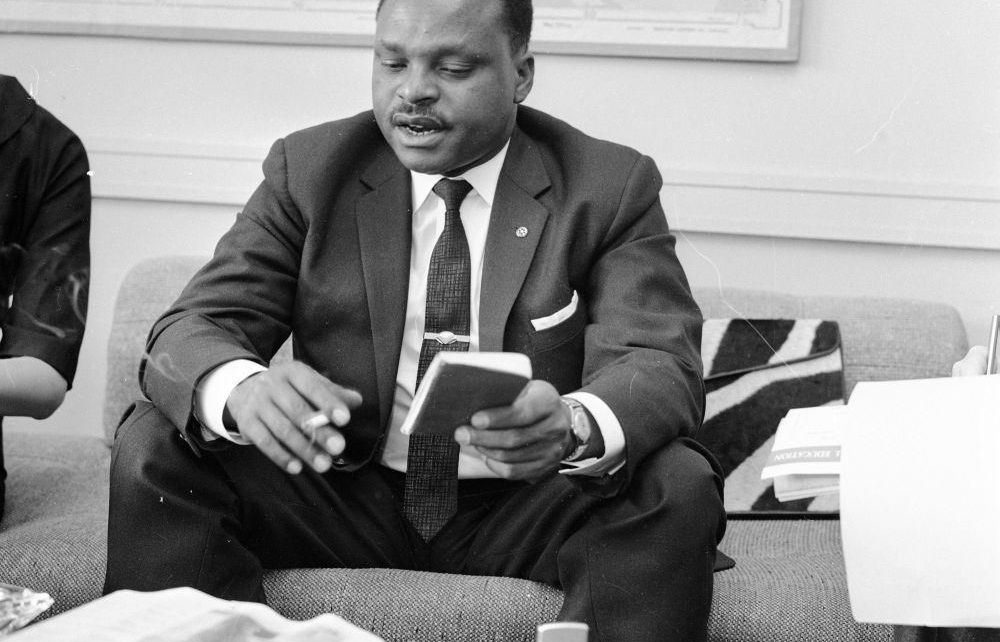He ended up losing the high cost Peponi School, directorships, shares in blue chips and his children could not secure jobs
By Undercover Reporter
@Undercover KE
He might not ring a loud bell if you never experienced life under a suffocating presidency in Kenya. But Charles Wanyoike Rubia was a politician with balls of steel before he was washed off into obscurity by a political euphoria he helped create.
Rubia, who died on December 23 at 96, was the first African Mayor of Nairobi where he has a road and lane named after the man who considered himself presidential material. Alas! life took a different turn and he sued the government over unlawful arrest and detention, demanding Sh40 billion, the highest such claim in Kenya’s history.
Let us start from the beginning.
Rubia was a beneficiary of his time period on his to ventures in tours and travel, insurance, property and real estate and public equities.
He attended Alliance High School, the cradle of Kenya’s political elite at independence. Rubia, unlike his peers hardly furthered his education to university when he cleared in 1941, but ended up owning the high cost Peponi School, before it changed ownership to the Kenyatta family.
After Alliance, Rubia was trained in Tanzania’s Posts and Telecommunication School. He became a pioneering postmaster, before rising through Kanjo politics as a nominated councilor in 1959, the year a British Council scholarship saw him studying how Kanjo operated in London.
Rubia became Mayor of Nairobi in 1962, taking over from Harold Travis, the last mzungu City Father. It was Travis, the man who founded what later became CfC Stanbic, proposed Rubia as a “man of integrity” and potential heir.
It was a done deal. Mayor Rubia did not disappoint despite power later going to his head: Roads were washed at night, streets swept during the day. Garbage was collected most Saturdays, public toilets were free and cleaned daily. Taps had clean drinking water, Nairobians enjoyed scheduled public transport.
City Park was well-manicured and the Mosquito Superintendent drained all stagnant water, the Dog Pound officers Pangani shot mongrels suspected to have rabies.
Nairobi was the ‘City in the Sun’-the slogan coined by Dr J.R. Gregory the Mayor for one year to 1953.
City Mayors were more powerful than current governors, politically.
For starters, all diplomat posted to Kenya first presented their credentials to founding President Mzee Jomo Kenyatta, then Rubia hosted banquets for them at City Hall. Then power got into Rubia’s Murang’a head.
Rubia’s Rolls Royce was four times costlier than President Kenyatta’s Mercedes, six times that of the Mayor of Berlin
When Jomo Kenyatta was being inaugurated as Prime Minister in 1963, Rubia created a furor, demanding to sit at the front row alongside Kenyatta arguing he was Mayor of the city as Duncan Ndegwa notes in his 2009 memoirs, Walking in Kenyatta Struggles: My Story.
Thumbing his nose at Mayor Travis previous ride, a Humber Super Snipe, Rubia desired a Rolls Royce worth Sh217, 000- with police outriders.
It was four times costlier than President Kenyatta’s Mercedes, six times that of the Mayor of Berlin. To drive Rubia’s Rolls Royce, its driver had to be trained in London.
City Hall then was reeling under a Sh161 million loan borrowed for housing, water and other projects. The backlash saw him settling for the Vanden Plas Princess…lesser prestigious but with a Rolls Royce engine all the same!
Rubia, a powerful power broker, eventually resigned from City Hall in 1967, but attempting to block Margaret Kenyatta, the President’s daughter, from becoming the first African woman Mayor almost got him at loggerheads with the powers that be.
Rubia turned into elective politics, winning the hard fought Starehe Parliamentary seat in 1969, the year Tom Mboya was assassinated. Mboya and Rubia were political rivals in Kanu and Nairobi politics. Initial suspicions-later unfounded-were that he was among those who planned the assassination, would you believe it?
Rubia served as MP for over 20 years when being caught by plain clothed police mentioning the name of then President Daniel arap Moi could have had your butt reddening under cigarette burns at Nyayo House torture chambers.
In eight years to 1990, Kenya was a single party police state following the abortive coup of August 1, 1982. To be an MP, Kanu was a must, preferably as a Life Member. It was wisdom spotting miniature lapel portraits of Moi on all your coats.
Moi then had consolidated, centralized, and personalized power while neutralizing disloyal elements, real and imagined.
The freedoms of the press, expression, association, and movement were curtailed. Detention without trial, which had been suspended in 1978, was reintroduced through a constitutional amendment. Kanu replaced the secret ballot with a ‘Mlolongo’ system in which voters queued behind candidates. The economy went to the dogs through official corruption, nepotism, cronyism and outright incompetence.
Moi was divorced and his 24 year presidency starred no First Lady at State House and it was thus foolish parading your wife
During national days like Jamhuri Day, it was very foolish parading your wife: Moi was divorced and his 24 year presidency starred no First Lady at State House. So, who were you to show off your woman?
One Dr Josephat Karanja, the then Vice President and MP for Mathare, often went against the grain, showed off his beautiful Ugandan wife, Betty Nyindombi. The former university VC and one-time Kenya High Commissioner to London later cried in the toilet: Betty was almost deported for being an non-citizen marking the beginning of Dr Karanja’s downfall as Veep.
It was in this atmosphere that Rubia and the late Kenneth Matiba, both then loaded Kikuyu Kahunas, decided enough was enough. While in Rubia’s office they vowed “we must do this”
The late 1980s and early ‘90s saw the end of Communism in Europe. The Cold War in which African countries were political pawns between Russia and America ended. Dictatorships and despots were falling globally. But Rubia later recalled that world events did not largely influence their being fed up with Moi and his ignoble regime.
On March 3, 1990, both resigned from government in which Rubia had served as Ministers of Local Government, Works and Housing. It was unheard of at the time, but Rubia had lost in the ‘Mlolongo’ elections of ’88 and didn’t give a hoot. After all, he had been expelled from Kanu.
They later called a joint press conference at today’s Sarova Stanley before a second one at Chester House in Nairobi. They demanded for a referendum to usher in multiparty democracy. You needed balls of assorted metals to do that during Moi’s repressive regime.
But it was the beginning of Kenya’s ‘Second Liberation,’ the first having been the war of independence.
Embolden by their initial bravado, Rubia applied for a license to hold a political rally at Kamukunji grounds on July 7, 1990, a day now historically known as Saba Saba Day.
Eight guards played cards while watching over the lone man who had never been a prisoner before
They never attended as both were cooling their heels in various prisons as detainees.
On July, 4, Rubia attended the American Independence Day at its Embassy in Nairobi before he was later yanked from a committee meeting at Muthaiga Golf Club and roughed into a Land Rover which sped into the darkness.
Rubia was detained at Naivasha then Kamiti Maximum Prison, surviving on boiled veges, beans and meat that tasted like leather. The cold floor worsened Rubia’s sinuses. Eight guards played cards while watching over the lone man who had never been a prisoner before.
On learning of the detention, his wife Hannah collapsed. She developed high blood pressure and never recovered. Misery loves company. Despite double MBAs from foreign universities, Rubia’s children could not secure employment. No local companies risked hiring them. His tour company, Kenya Mystery Tours, lost business from government on instructions of the president. Rubia was a director in several parastatals including Commercial Development Corporation and ICDC. Those positions were declared null and void by the president including sitting on the board of Coop-bank. He lost shares in blue chips like UAP Insurance (then Provincial Insurance) besides relinquishing ownership of Peponi School and Rweru General Stores.
Politically, Rubia left the autocratic Matiba’s Ford Party and spearheaded the formation of Kenya Social Congress. Blunder. It was little known. Rubia lost the Starehe seat to the Ford opponent during the euphoria he helped create!
Leaking his wounds and to take care of sick Hannah, Rubia left politics, faded out of the public limelight. Hannah later died in 2000.
For detaining him for 11 months, Charles Rubia considered retired President Moi “a very foolish man.”
Charles Wanyoike Rubia was buried in his rural Karigu-ini farm in Murang’a County on December 30, 2019.

